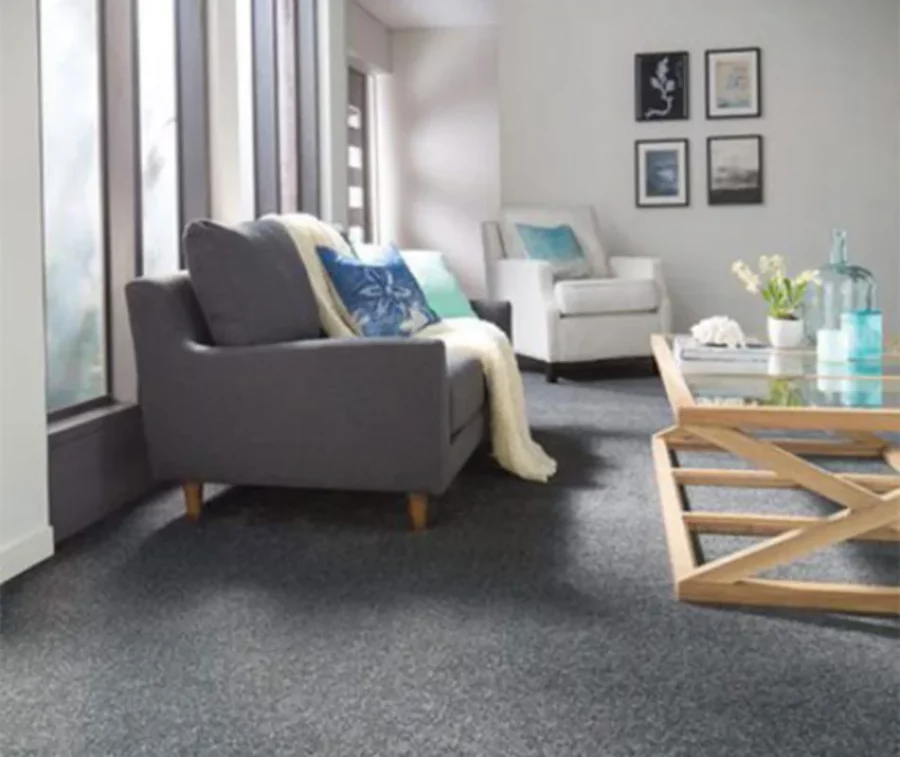Which Rugs Are Best for Allergies or Asthma?
By Guest Writer
February 27, 2023
Update on : February 28, 2023

Allergies or asthma can make living in your own home a challenge. Whether you’re sneezing, wheezing, coughing, or dealing with itchy and watery eyes, these reactions can be difficult to manage. And while some of these reactions may be caused by other sources like dust mites and pet dander, the presence of rugs in the home can also play a part.
Rugs have long been a staple of interior decorating—adding warmth and color to any living space. But if you suffer from allergies or asthma, choosing the right rug is key. In this blog post, we will explore which rugs are best for allergies or asthma so that you can decorate without compromising your health.
What Are The Best Types Of Rugs For Allergies Or Asthma?
If you’re someone who suffers from allergies or asthma, you know that certain triggers can make your symptoms worse. And while you might not be able to control every allergen in your environment, you can take steps to limit exposure by choosing the right type of rug for your home.
The best rugs for allergies or asthma are those made from natural fibers like wool or cotton. These materials are less likely to trap dust and other allergens than synthetic fibers like polyester or nylon. In addition, natural fibers are often more durable and easier to clean, which can also help reduce allergens in your home.
If you’re looking for a rug that’s both stylish and allergy-friendly, consider a jute or sisal rug. These rugs are made from plant fibers and are naturally resistant to dust and mold. They’re also usually less expensive than wool or cotton rugs.
No matter what type of rug you choose, be sure to vacuum it regularly to remove any trapped allergens. If possible, invest in a vacuum with HEPA filtration to further reduce the risk of triggering your allergies or asthma.
The Different Materials Used In Rugs
There are a variety of different materials that can be used in rugs, each with their own benefits and drawbacks. Some materials, like wool, are naturally hypoallergenic and can help to trap dust and other allergens.
Other materials, like synthetic fibers, may be treated with chemicals to make them more resistant to allergens. Still, other materials, like jute or sisal, are not naturally resistant to allergens but can be tightly woven to create a barrier that traps dust and other particles.
When choosing a rug for someone with allergies or asthma, it is important to consider the material it is made from. Wool rugs are a great option for those with allergies or asthma as they are naturally hypoallergenic and help to trap dust and other allergens.
Synthetic fiber rugs may also be a good option as they can be treated with chemicals to make them more resistant to allergens. Jute or sisal rugs may also be worth considering as they can be tightly woven to create a barrier that traps dust and other particles.
How To Choose The Right Rug For Your Allergy Or Asthma Sufferer
If you or a loved one suffers from allergies or asthma, you may be wondering which type of rug is best for your home. There are many factors to consider when choosing a rug for an allergy or asthma sufferer, including the material, the pile, and the size.
Material: The material of the rug is important for two reasons. First, some materials are more likely to harbor dust and other allergens than others. Second, some materials may trigger an allergic reaction in some people. Wool and synthetic fibers are generally considered to be the best choices for people with allergies or asthma.
Pile: The pile of the rug also plays a role in how well it traps allergens. A low-pile rug will allow dust and other particles to settle on the surface, where they can be vacuumed up easily. A high-pile rug will trap allergens more effectively but can be more difficult to clean.
Size: The size of the rug is also important for people with allergies or asthma. A smaller rug will have less surface area for dust and other allergens to settle on. However, an oversized rug may be more difficult to keep clean. There are multiple benefits to oversized rugs.
The Benefits Of Rugs For Allergy Or Asthma Sufferers
Rugs can actually trap allergens and help to keep them from circulating in the air. This is especially beneficial for allergy or asthma sufferers who are constantly exposed to triggers. Rugs also provide an extra layer of insulation, which can help to keep dust and other particles from becoming airborne.
In addition, rugs can provide a barrier between allergen-filled carpets and furnishings, reducing the amount of dust and other particles that enter the home. They also reduce noise levels in the home, which can help to create a quieter environment for those with asthma or allergies. Finally, rugs are naturally soft and cozy, providing comfort during periods of flare-ups.
Conclusion
Allergy and asthma sufferers need to look for rugs that are free of dust, dirt, mold, and mites. The materials used should be hypoallergenic and easy to clean. Rugs made from natural fibers like jute, seagrass, or sisal are ideal as they don’t accumulate a lot of dust or allergens. Nylon carpets can also be suitable if they have a tight weave and low pile which makes it difficult for dust particles to accumulate in them. By choosing the right type of rug, allergy or asthma sufferers can minimize their exposure to allergens and create an environment where they won’t suffer from symptoms related to their condition.

















